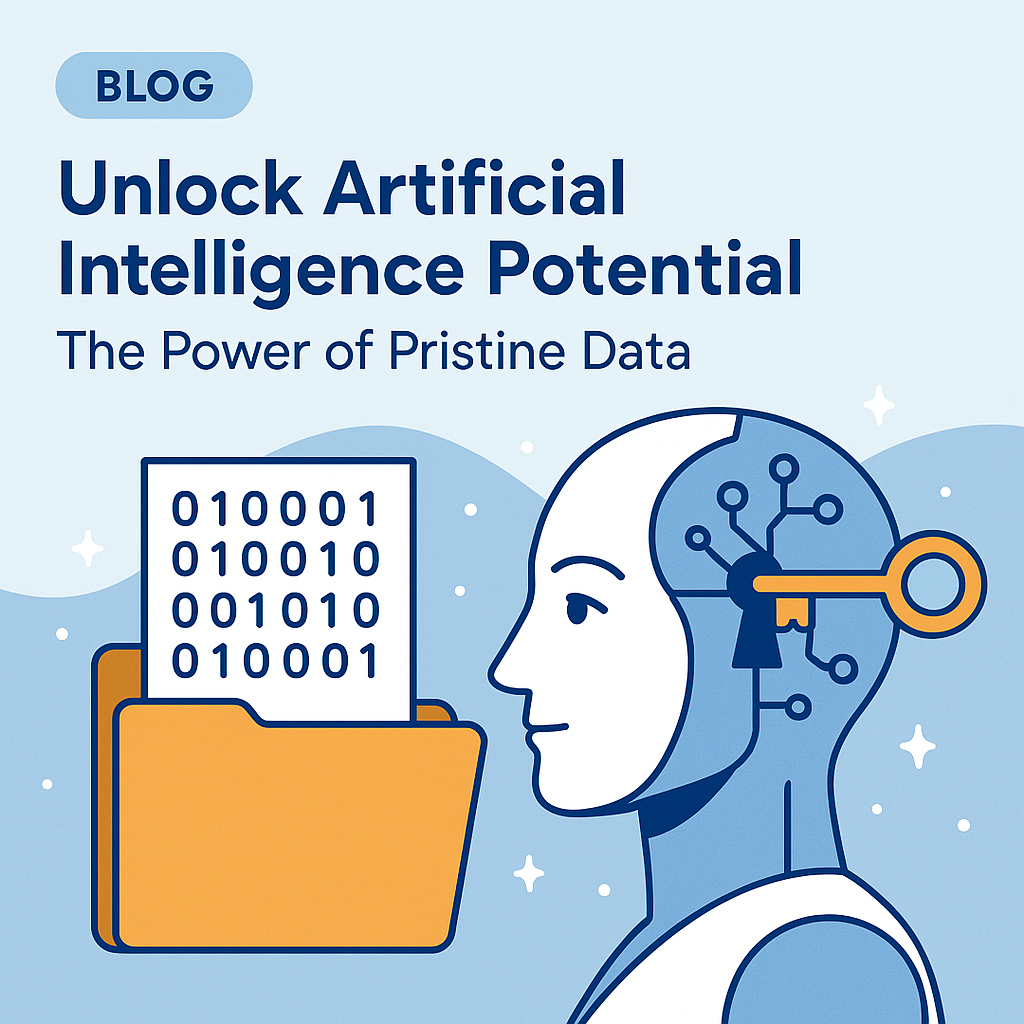Part 6 in the Series: Unlock Artificial Intelligence Potential – The Power Of Pristine Data
The integration of Artificial Intelligence (AI) into cybersecurity has ushered in a new era of sophisticated threat detection, proactive vulnerability assessments, and automated incident response. As organizations increasingly rely on AI to bolster their defenses, the fundamental principle remains that the quality of the data on which they train these advanced systems directly links to their effectiveness. The old saying “garbage in, garbage out” (GIGO) holds true here; unlock superior cybersecurity AI with these data hygiene secrets.

In Part 5 we covered some ways how data quality issues can manifest in AI models. Ensuring high-quality data for training AI models in cybersecurity requires a comprehensive and continuous effort. These efforts include effective data cleansing, robust validation processes, and strategic data augmentation techniques.
Data Cleansing
Effective data cleansing is the first critical step. This involves establishing clear data collection processes with stringent guidelines to ensure accuracy and consistency from the onset (https://versium.com/blog/ais-achilles-heel-the-consequence-of-bad-data). Conduct continuous data audits to proactively identify any anomalies, errors, or missing information within datasets. It is essential to remove duplicate records to prevent the skewing of results. It is just as important to handle missing values using appropriate methods such as imputation or removal. Carefully consider the context and potential biases introduced by each approach (https://deepsync.com/data-hygiene/).
Outliers can distort analysis. Manage them using techniques like normalization or Winsorization (https://en.wikipedia.org/wiki/Winsorizing). Maintaining overall consistency is paramount. Require the standardization of data formats and the conversion of data types/encodings to ensure uniformity across all sources. Keeping data in a unified form can help prevent inconsistencies that arise from disparate systems.
Unnecessary or irrelevant data should be eliminated to avoid clutter and improve processing efficiency. Errors need to be actively identified and corrected, and the accuracy of the data should be continuously validated. Leveraging automation and specialized data integration software can significantly streamline these types of data cleansing processes. It is also crucial to maintain proper logs of cleansing activities. Develop proper processes and comprehensive documentation for all data cleaning procedures, maintaining a detailed record of every step taken to ensure transparency and reproducibility. Constant validation throughout the process is key to ensuring the accuracy and suitability of the data for AI training.
Data Validation
Robust data validation is important to ensure the integrity of the data used to train cybersecurity AI models. This involves implementing validation rules that check for data integrity and adherence to predefined criteria, such as encodings, format constraints, and acceptable ranges (https://www.smartbugmedia.com/blog/data-hygiene-best-practices-tips-for-a-successful-integration). Automated validation checks can be employed through rule-based validation, where specific criteria are defined, and machine learning-based validation, where algorithms learn patterns of valid data. Utilizing specialized data quality tools can further enhance this process.
Specific validation techniques include:
- Performing data range validation to ensure values fall within expected limits.
- Data format validation to check the structure of the data.
- Data type validation to confirm that data is in the correct format (e.g., numeric, text, date).
Conducting uniqueness checks to identify duplicate entries and implementing business rule validation to ensure data meets specific organizational requirements are also critical. Ensuring data completeness through continuous systematic checks is another vital aspect of validation. While automation plays a significant role, teams should also conduct manual reviews and spot checks to verify the accuracy of data handled by any automated processes. Establishing a comprehensive data validation framework and finding the right balance between the speed and accuracy of validation are key to ensuring the quality of the training data.
Data Augmentation
Data augmentation is a powerful optional technique to further enhance the quality and robustness of cybersecurity AI models (https://www.ccslearningacademy.com/what-is-data-augmentation/). This involves synthetically increasing the size and diversity of a training dataset by creating modified versions of existing data. Data augmentation can help prevent overfitting by exposing a model to a wider range of scenarios and variations. This can lead to improved accuracy and the creation of more robust and adaptive protective mechanisms.
Various techniques can be used for data augmentation, including:
- Text based (e.g. word / sentence shuffling, random insert / delete actions)
- Image based (e.g. adjusting brightness / contrast, rotations)
- Audio based (e.g. noise injection, speed / pitch modifications)
- Generative adversarial networks (GANs)
The generative techniques are interesting because they can generate examples of edge cases or novel attack scenarios to improve anomaly detection capabilities. Furthermore, teams can strategically employ data augmentation to address the underrepresentation of certain concepts or to mitigate bias in training data.
Ultimately, a comprehensive strategy combines rigorous data cleaning, thorough validation, and thoughtful data augmentation. Unlock superior cybersecurity with these data hygiene secrets in order to build high-quality datasets required to train effective and reliable AI models. Some of these techniques have been employed by the examples covered in Part 7 – Success Stories: Real-World Examples of Effective Cybersecurity AI Driven by High-Quality Data.